This Blog has moved…
12 Friday Jul 2019
Posted in Crafting
12 Friday Jul 2019
Posted in Crafting
06 Friday Oct 2017
Posted in Inspirations

Photo of Milla Prince (The Women who Married a Bear)
Living on earth is an exquisite experience. Rich, beautiful, exhilarating! … and also, let’s be serious for a moment, hard as hell.
Don’t get me wrong, being here is wondrous, but that doesn’t mean it’s easy. There are small things that hurt. Spilled tea, papercuts, a word thrown carelessly. And big things too, bigger things than our bodies were even meant to manage. Oil in the ocean, clear cuts, weapons sold carelessly. This past week in our country we experienced one of the biggest mass shooting in recent history. It is a horror and an ache (and a clear call for policy shift). And yet another swath added to the larger tapestry of disaster and heartache that has been these past few months.
It is a lot, to say the least. It’s a lot to continue to believe in the wonder, the beauty. To still find the etching of light that exists around closing doors. To court magic, and believe in the good things coming.
Sometimes it’s all you can do to take care of the small things. Like throwing away the flowers that have grown stale or taking out the compost. In moments like these it’s perfectly fine to sit all day by the soup stock, and focus on what feels nourishing. Because when we learn how to take care of our human bodies, we can continue to find our humanity. And because tea and snuggles and laughter and pie is good medicine. It’s the medicine we need to teach our bodies how to breathe in a world where global tragedy pops up daily on your screen.
So what do you do when the world teams with the beauty of sunflowers and mums in every color… and yet it also seems like it’s going to hades in a handbasket?
In light of the ongoing heart-depletion of this time I’ve created a Guide for Keeping Your Head up. The five things I do every day to keep healthy, heart-strong and connected to the good. Because it’s there, it will never fade. And every day we have the opportunity to learn new pathways for finding the good that remains.

Media these days moves at the speed of light. An event that happens in one corner of the world is beamed onto every screen within the hour. Our bodies, however, are on a much slower evolutionary trajectory. In many ways our hearts, minds and nervous systems are the same as they’ve been for thousands of years… and life used to be a whole heck of a lot different. Our bodies developed in small more-than-human societies, where stress came and went and the locus of your world was your individual community. Today, we are plugged into the whole globe and often bearing the brunt of an entire planet’s stress. Overwhelm has become a near constant state of being for most folks. Our nervous systems simply weren’t built for this kind of overload of information! And so we need to learn how to take a breath and become better caretakers for our own bodies.
Good parents are conscientious not to push their children beyond the brink of their physical capacity (and if they do, God help them, for it shall be known in the form of tears and endless tantrums). We’d do equally as well to take such good care of our bodies. Because the truth is that every time we push our bodies beyond their capacity for integration, we face a similar reaction. There is only so much a single person can take, and our bodies have their very own special kind of “tantrums” to let us know when enough is enough: anxiety, depression, colds, muscle aches, skin breakouts, digestive querulousness… (aren’t they precious?!). Skip the tantrums by listening and taking care.
Stay strong enough to weather the times by tending to the “soft animal of your body” first and foremost. Be gentle on your heart, your nervous system. Give yourself time to decompress. Take baths, massage the bottoms of your feet, turn off the computer after dinner. Make yourself an herb blend to take as a daily tea or tincture. I keep a tincture called “Everything is Going to be Okay” in my purse at all times. And it always helps. Try making your own or check out my sample formula below.
4 oz tincture formula
Milky Oats (Avena sativa) 30 mL
Hawthorn Berries (Crataegus spp.) 30 mL
Motherwort (Leonurus cardiaca) 30 mL
Tulsi (Ocimum tenuiflorum) 30 mL
+ Flower essences of: Hawthorn, Cherry Blossom & Star of Bethlehem
(7 drops of each)

2.Begin Every Day with Gratitude
Gratitude shifts our perception. It is the fastest way to alter your consciousness and elevate the goodness. Gratitude gives your heart the strength to move into dark times. It is a lantern that will help you to the other side.
I begin every morning by giving gratitude for everything I can in my life. The food I eat, the water I drink, the air I breathe. The beautiful things, the hard things, the things that teach me how to be me. I give gratitude for it all, big and small, and then it is the blessings that stand out to me.
After my gratitudes, I take some time to “send light.” Sending wishes for care, nourishment, help or aid to those in need. I ask for the intervention of higher powers, I request miracles. Sometimes I ask for those in peril to know, simply, that they are cared for, thought of. I send my light, from the infinite source of all light, and by doing so I come into heart-felt relationship with all the love I have to give (and the attendant power it then gives me to act).
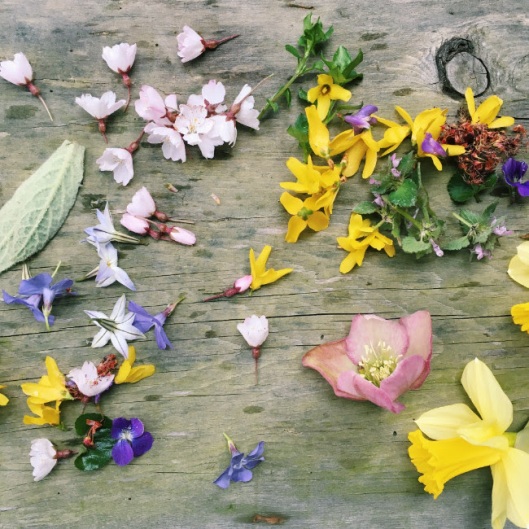
It is natural, when things fall apart to want to connect to others, and be in the know. But often we end up reading the same, similarly worded article over and over again and feeling our own power drain from us as we get lost in hopelessness or fear. Keep yourself sane by limiting media and forging real connections. Find reliable news outlets, update yourself once a day, then step away from your computer and reach out to an actual friend.
Studies show that social media creates more feelings of loneliness than it does community or connection. A good scroll on Instagram might seem just the thing to assuage one’s grief, but it can often overwhelm our senses, leaving us feeling even more inadequate or alone. When times get hard, gather your good friends close and talk about it. If you are sad, shocked or grieving, reach out. Call a friend to chat. Make a tea date. Go into the woods for a “forest bath” (plants are the most healing community I know and are always there to help you ground back in hope). Real community and relationship is important for healing and the best medicine is what happens “irl” (as they say).
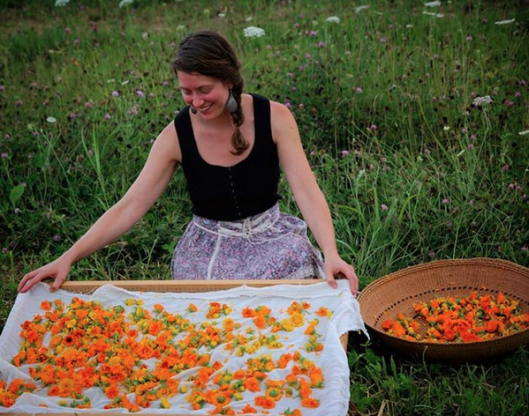
Photo by Juliet Blankespoor
Laughter is medicine. It is the first medicine we ever learn to give ourselves, and it is a medicine that can be freely generated at any moment. In The Book of Joy, a conversation with the Dalai Lama and Desmond Tutu (and a wonderful read for any hard moment), Douglas Abrams refers to a Mexican shaman he met once who said, “laughing and crying are the same thing— laughing just feels better.” And it’s true.
Laughter helps clear the body in the same way tears do, and it is good medicine indeed. So, find the things that make you giggle. Go see stand-up comedy, call a friend who makes you chuckle, check out your favorite meme account, or better yet start a “funny file” on your phone to go to anytime you need a pick-me-up.
I was just clearing out my phone tabs the other day when I stumbled across this SNL skit I saved over a year ago. It seriously NEVER FAILS to make me giggle.
What is making you laugh these days?
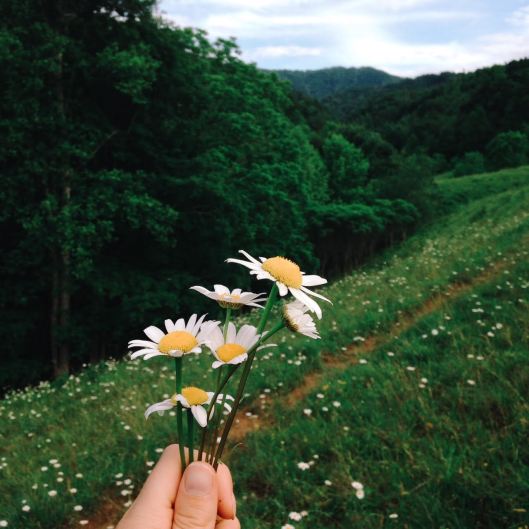
Offer concrete actions to help assuage the ache. Social sharing, monetary contributions, giving blood, writing blog pieces, donating clothes, making a phone call to your representative, offering your services for low cost or sliding scale. Generosity is one of the eight pillars of finding true joy, as outlined by Desmond Tutu and the Dalai Lama. When we give from wells that are full, we experience a deep and replenishing joy. Whether it’s a listening ear, a small love note, or an anonymous donation, we all have something to give to help the greater whole.
When you feel deeply awash, try to undertake that one action and then give yourself permission to be done for the day.
Transition all the way back to #1 on this list (nourishing yourself) and know that you will have even more strength tomorrow.
26 Tuesday Sep 2017
Posted in Inspirations

There are a handful of things that I can say I’m honestly addicted to. Potato chips are, admittedly, one of them. Buying crystals is another (guilty). Oh, and raw vegan cheesecakes (ugh, don’t even get me started). But if anyone got a peek at my amazon account they’d see where the real problem lies— Books.
Around my house there are piles pretty much everywhere. Next to my bedstand, my reading chair, my computer desk, the toilet… I’ve loved books for as long as I can remember. I still get a special tip-to-toe thrill when I think about the day the book fair catalogues came to our desks in elementary school. I would take them up, pen in hand, with the same kind of zeal I imagine hoarders might feel when they stumble across a football field-sized fleamarket. Combing the pages and circling books for my wish list felt distinctly different from the ways in which I would absentmindedly mark up clothing magazines (which, in contrast to the book catalogues, I never actually convinced my parents to purchase from). It was as if my very self was changing just by imagining cracking open these tomes.
It felt less like marking a book I wanted, than circling an entire world.

The library at Terra Sylva
What would it be like to wear a skirt made of nettle and ride a horse at full speed across the moor? Or to navigate a ship by the milk of the stars? To speak to pelicans or to have everything taken away from you except your grandmother’s songs?
Books are more than just a way to learn, or transport yourself, they are a portal to accessing other whole fields of lifeline and thought. Books help us put aside the well-worn map of our own patterns of thinking, our well-thumbed beliefs and calcified knowing, and step into the beyond. Books show us the worlds that exist within worlds, and teach us how to look behind the corners of things. To see shoe scuff and chickweed and the way mica and starlight can, truly, be the same thing.
One of the most common questions I get is… what are your favorite herbal books? There are a lot of answers to this question. I could tell you about the books that helped me learn how to make medicine. The books that gave me the encyclopedic knowledge of herbs that I’m still cultivating and harvesting from. Or perhaps the books that taught me how to identify the plants and call them by name?
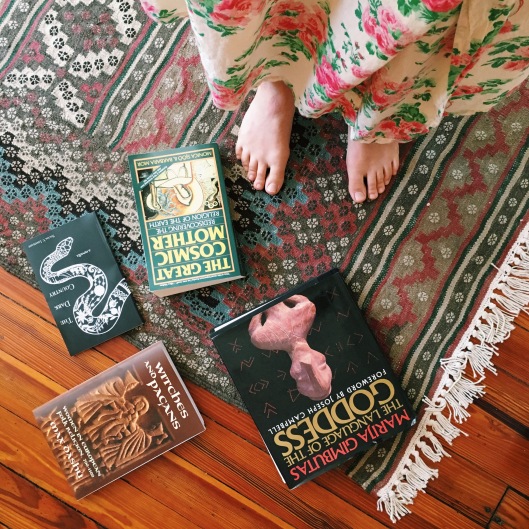
For me, though, reading and education in general has always been less about informational input or practical resource, and more about the concepts, sentences, or sometimes even single words, that struck me so deeply I was never the same. The best books I’ve ever read didn’t really “teach” me anything at all. They helped me remember. They made me cry, not with sadness, but with recognition. They washed my eyes so I could see clearly again.
I think when folks ask me for my favorite herbal books what they really want to know is, what are the books that made you the herbalist that you are? And that’s a different thing entirely. So, in honor of the new school season, and for all those bibliophiles on my list, I’m comin’ clean. Check out the video below to get a peek at my three favorite, slightly unconventional, herbal tomes.
20 Wednesday Sep 2017
Posted in Inspirations
This trip was the first in a pilgrimage project that I’m just beginning to lean and listen into. Visiting landscapes where animisim, an intimate and interactive relationship with the land, is alive and well. It is new creek in the mountains of my work and I’m so excited for what is to come.
So come begin the journey with this collection from my time in Japan…

“There are many unseen things that drew me to visit Japan, most of which I cant yet name but feel underneath my hands, like warm tea through porcelain. The inspiration to travel to Japan came in when I was out for a walk on this year’s summer’s Solstice. It was as thrillingly unexpected as a basket of roses. So when the opportunity arose to hop a plane from Hawaii to Tokyo came along a few weeks ago I jumped first and asked questions later. I think I’m still figuring out what the questions are that drove me here. But I know (at least) one of the answers — the Kami.
Japan has a long standing tradition of animism woven into the fabric of their cultural expression. Called Shintoism (a name given to distinguish this ancient folk worship from the “newer” influence of Buddhism), it is a belief system as old as the humans who inhabited these seasides. Shinto means the “way of the Kami,” a practice of devotion to and connection with the unseen elements that animate all things. “Kami” is often translated as “sacred spirits,” but it would be closer to the truth to say that the Kami are the spirits of everything, the living sentience, the soul that exists within every being. The Kami are the consciousness of mountains, rivers, stones, trees, thunder, wind. There are Kami of growth and fertility, Kami of the ancestors, the Kami of a path made by a thousand journeying feet. Everything that springs naturally into being is Kami. And so shrines, ancient and tended, dot the country here like springs.
It has been a long time since I, or the ancestors who make up my lineage, have lived in a place of such uninterrupted connection with the spirit of all things. It has been a long time since my body has moved in a place where it is not only natural, but expected, to bow to trees and make offerings to stones. And there is something about being here, in this place, that activates a language that moves like marrow in me.
To spend ones life enshrining the natural magic of the world, coming into its own being.
I do not know yet, entirely, what question drove me here to the heart of Japan. But I know an answer, or at least I have met many of them, so far, along the way. The Kami.”
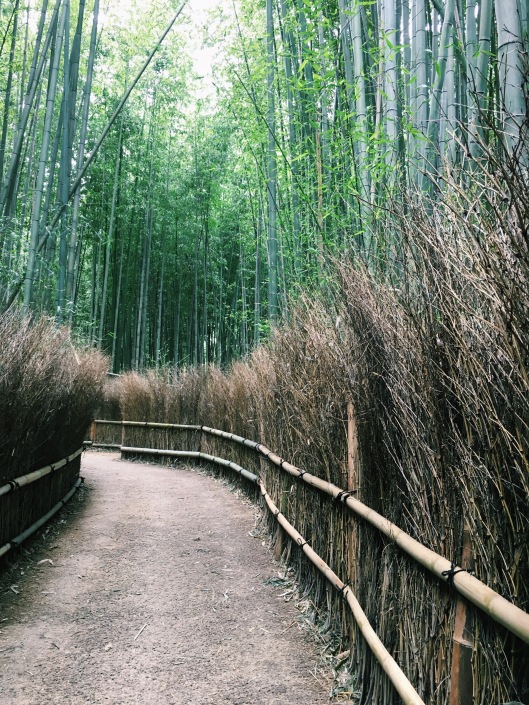
A Soundscape of Bamboo
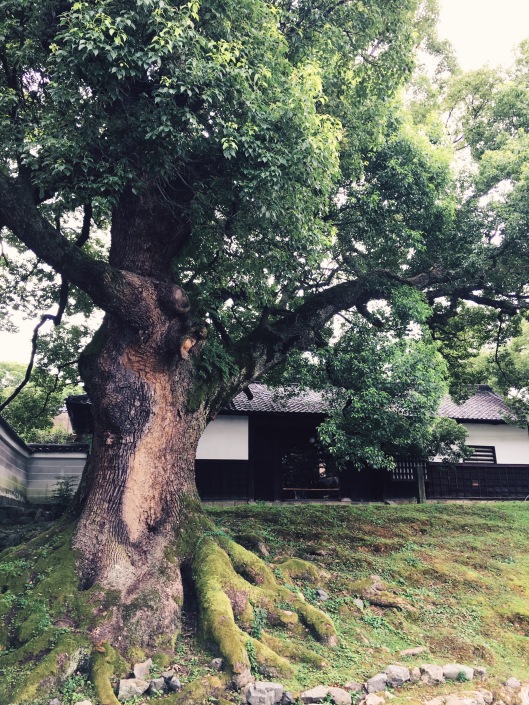
“I am continually amazed by how alive the plants feel here in Japanese cities. How differently a tree can look when it has been recognized, since birth, by all the people who pass underneath it’s branches. When it is seen as the being of consciousness that it is. Our first night in Kyoto we stumbled upon a canal lined with weeping willows and I actually gasped. There was no steps, no long corridors, no special meditations necessary to speak to these trees. They were already speaking, in fact, they were singing. And it brought me to tears just to be near them. They were more alive in this cityscape than the flames in the nearby lanterns, just lit and swaying. The trees felt more alive than my own being.
It is a gift, to be a student to the trees. To the landscape. To a cultural interaction with animism never lost. To ways of seeing and tending to the aliveness of the world. It’s a gift to be here, and be learning.”
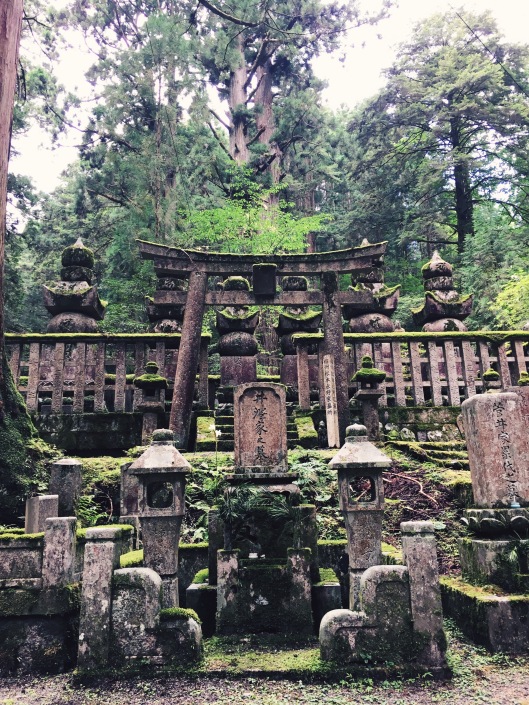
“There are Shinto shrines every where in Japan. Embroidered into street corners, tucked behind temple monasteries, beside public phones or subway entrances. Often these sites were first enshrined to recognize the specific spirit of the living landscape. In some places the city has grown up right around them, in others shrines are still hidden so deep in the cedar woods only locals know they are there.
The recognition that we live in a living world is every where you look in Japan. There is no self consciousness about bowing before a tree or stone, because therein lies a Kami, an ancient consciousness from which we are here to praise, learn, tend.”

“How would things change if we moved through the world and paused to recognize the emanations that surround all beings. If we were as deliberate as the rock gardener. Starting afresh every day, not with our own designs, but with the beginners mind. With the openness to read the patterns that are already in motion. To align our lives with the flow of bird, river, stone.
It is enough, I think, simply to be able to see it. Those invisible circles of relationship touching corners with your own. To witness the way magic ripples off of all things. There is so much mystery in the way this world moves. In the way one thing is hitched to all others. I’m grateful for the glimpses. Stones surface like sea creatures, humming to us for a brief moment so we know there is more, so much more, below our own horizon lines.”
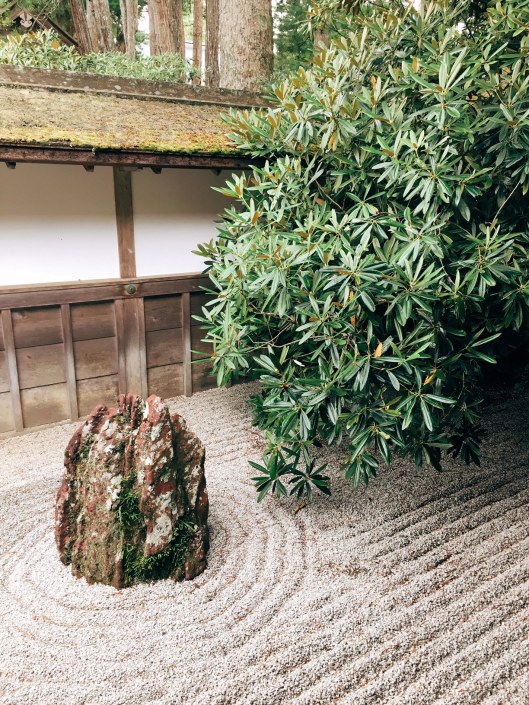
Emanations

The cable car up to Koyasan

“Mountains hold a special place in the Japanese landscape of consciousness. By some accounts mountains are seen as the first magics, the originators of wisdom, spirit, life and kami. If you wished to cultivate yourself as a scholar, a monk, a ninja… you need only go to the original teacher– The mountains. In Japanese “san” is an honorific, it announces someone of great internal stature and importance. You would call your beloved professor “san”, your mentors, your elders. Almost all mountains in Japan hold the title “san.” It is a marker of the way in which the sentience of the mountains tower in the Japanese imagination. And a nod to a long history of learning, devotion and reverence. This mountain, this high altitude place of quiet bamboo, waterfalls, wind thickets and stone is called Koyasan. Home to a shoreline of temples since the 700s, arriving to Koyasan on one long cable rope feels like stepping off a ship, a pilgrim in the presence of an entirely new, and long holy, teacher.”

“At some point I noticed the fact that the light is different everywhere in the world. Some places it’s as milky as common Quartz, diffuse like lantern light. In others it pierces the water like sunspots, makes even shadows sharp. Here in Japan it feels as if everything is seen through soft paper and soji screen. There is a dimness that makes shadows as comfortable as quilts. A place where a light parasol is part of ones courtship with the sun rather than a necessity in the face of its gaze.
The light is different here, and I feel different within it.
Funnily enough, I’ve even found myself using different filters to try and capture what it is I’m seeing through my little phone. But somehow they always seem to sharpen like glass edge when they need to be diffuse as moss into stone. Print in bold when the scene before me is smudged as brushstroke. It’s the failure of a new technology in an ancient land. Sometimes I wish I carried watercolors with me wherever I went.
How can I capture the particular pewter glow of cobble stone here, or the way sunsets melt like well used brushes in pots of water? I cannot. So I record it somewhere in my body, so I can learn how to walk slowly in a Yukata. So I can see the way gold is meant to come alive in shadow. So I can watch the rain and see the brightness it brings to the pond outside my window.”

Worn wood corridors and gardens lit by lantern light

“I’ve had the privilege of traveling here in Japan during Obon, a time of lighting lanterns and honoring the ancestors and communing with those who have left to sit in eternal mediation. In a place where ancestor tending has continued uninterrupted for millennia it is easy to feel them close. They are not the ancestors of my own blood, but they are grandfathers and grandmothers of this land that is teaching me so much. I am grateful to have been with these islands during this special stretch of time.
If you have a moment, tend your own guardians. Leave a small dip of sake. A sprig of lilies, a cake of rice or sweet bean. Because, truly, the ancestors are never so far away. They are right there, on the other side of your offerings.”


“Empty rooms fill with light.”
“In Japan the concept of Mukayu has pervaded every bare corner, wood curve and low roof of light. Coined by the Chinese philosopher Zhuangzhi, Mukayu means “non-existence” or “non-purpose,” the freedom of emptiness. Mukayu is the purposefulness of not doing. It’s the richness of a wall left blank, a thought allowed to dissolve, a life left entirely open. It is the fullness of an empty schedule and a cup anticipating finely steeped tea. In Japan, a country of zen and quiet manners and moss, they talk about the idea of existing in a “countryside of Mukayu.” To me, this sounds like heaven.”
13 Wednesday Sep 2017
Posted in Inspirations
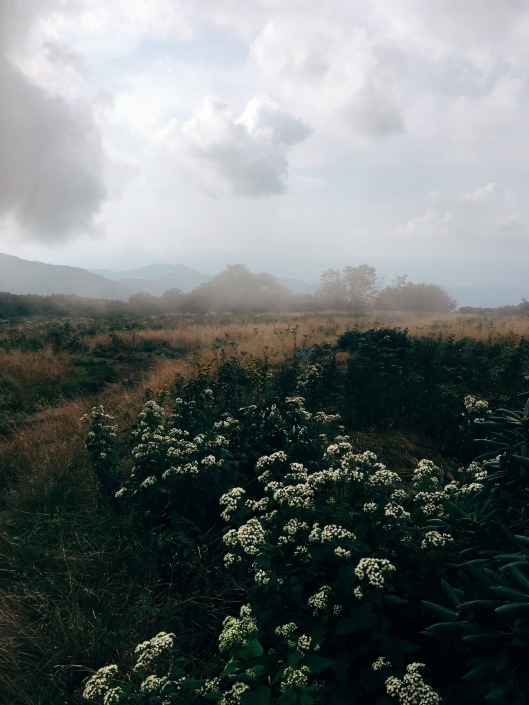
Fall always come in with a bit of a sigh. The letting go after a long haul. A shift that is needed in the bones, but that arrives on crow wings with a tinge of sadness all the same. There is something so beautiful about an Autumn field, that copper expanse gone to seed. When the options of what can be cultivated grow slim, and the things that must be done to tend the future become clear. Harvest what is ripe. Compost the rest. Till under, bed down, grieve, rest. The callings of fall are as golden and entire as a tumbler of whiskey, enjoyed on the porch at sundown. There is a slight burn to the necessary abandonment of it all.
I won’t lie to you, it’s been an intense time. Fires in the west with ash falling down like rain. Waters in Houston and South Asia flooding from home to home. The repeal of DACA and fear for the 800,000 Dreamers who are risk of being kicked out of their homes. Irma leaves rubble in the wake of her winds. Here in my own community we’ve lost two beloved herbalists in the past few weeks. Loss ripples out like autumn winds through the fields.
Liminal moments like these are strange. That space between the endings and the beginnings. You don’t quite know where to put your feet. In my last missive I wrote about the uniqueness of this season of Long Summer, how to ground into this in-between time and dig into the Earth again. As I sink into the final days of Long Summer, I find myself seeking out the comfort of these season’s medicines. To navigate by nourishing and clearing out the debris from within my own being.
There is the desire, as the sun dips down into the harvests of Autumn, to really let go. To empty your rooms, and your inner thoughts. To fill boxes with everything you never wore this past summer, to upend the pots into the compost. To let go so you can create space. Space to fill, not with new objects, but with the necessary exhale of your being.
The Philosopher Zhuanzhi says, “Empty rooms fill with light.” There is something about the emptying of grief, or just the plantings of old, that always opens us up to further light.
Last month I got the opportunity to travel around Japan and I was struck, wherever I went, by the way in in this emptying and filling, this Mukayu, takes form. Coined by Zhuangzhi, Mukayu means “non-existence” or “non-purpose,” the freedom of emptiness. Mukayu is the purposefulness of not doing. It’s the richness of a wall left blank, a thought allowed to dissolve, a life left entirely open. It is the fullness of an empty schedule and a cup anticipating finely steeped tea. It is the act of witnessing amongst the tumult. In Japan, a country of Zen and quiet manners and moss, they talk about the idea of existing in a “countryside of Mukayu.” To me, this sounds like the exact medicine needed for dense times.
So wherever you are in the cycle of grieving, rejoicing, birthing, reuniting or saying goodbye, may today be a moment of rest for you. A pause to empty, so that you may take it all in. A time of unburdening, of letting the tap run until the water is clear once again. May you find yourself in a countryside of Mukayu and at peace, if even just for the space of a single exhale. With the oceanic unknowing and the autumn fields of endings and possibility, and your home (the home you can always return to) in the countryside of simply being.
15 Saturday Jul 2017
Posted in Appalachian Beauty, Inspirations
Like an anxious spike high on the thermometer, a hot summer day can hold a whole lot. The heaviness of the past, the humidity of future-tripping, the density of a too-tightly-packed schedule. It’s life, intensified, with everything being experienced at once. Like the sound of the cicadas rolled into one giant buzz or the morning glory vines inching back into your freshly weeded garden, the tangle and overwhelm of summer is real on almost every level.
But just when you hit the height of I-can’t-take-it-anymore, that late afternoon moment when the humidity is thick enough to cup in both palms and you can’t do anything but lay with your head in the river, comes the most gracious blessing of all— the afternoon thunderstorm.
And it is a veritable downpour of medicine.
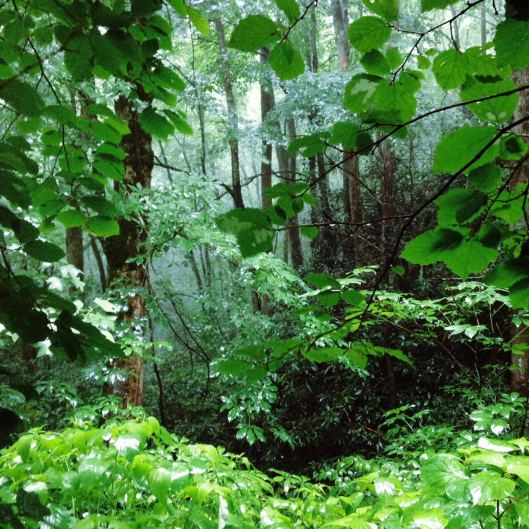
Here in southern Appalachia, afternoon rainstorms are an almost daily occurrence, and a near universal cause for a ceasework and celebration. It never fails to stir me. Out of the bright, bright heat the sky suddenly darkens, like the querulousness of my own tangled mind, and everything prepares for the release.
Sometimes there is lightening. Sometimes thunder. Sometimes everything gets so quiet beforehand, it is as if the world is holding its breath. It’s the still point before the burst, the voluntarily destruction, the relief. And out of the thunderclap comes the rain.
Loud, blessedly loud, and forceful in its clearing. Summer thunderstorms are insistent and brash, like that friend who always tells it like it is, and will order you to rest when you are leaning wearily towards the end of the day. In the downpour everything stops to drink. Trees drip in exuberance, creeks swell instantly. The hot concrete hisses and cools like snakeskin come evening. The world becomes a baptism, the mist off a waterfall. And there is nothing to do but surrender to the cacophony of falling water. Of cool sheets and easy breathing. And nowhere else to go in your mind but here, into the sound of the world being renewed.
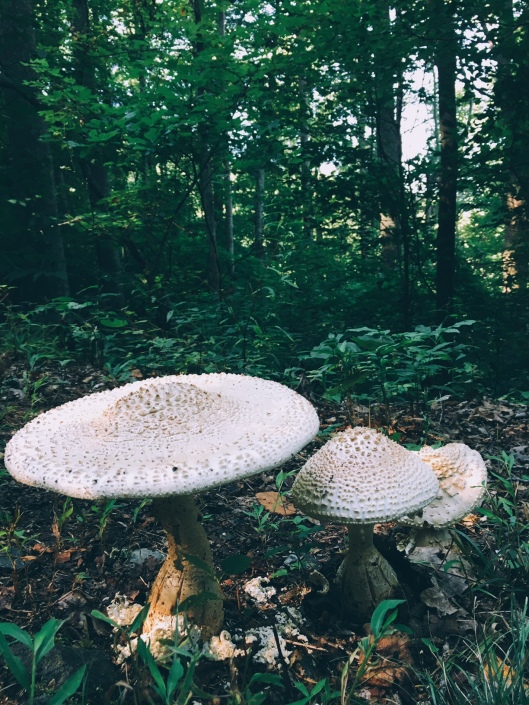
Afterwards, the temperature swings down low, so low it feels impossible that it was ever so hot before. Impossible that you ever once felt immovable with worry, anxiety, or overwhelm. The trees breathe out in great mists, creating the clouds that move over these mountains, giving them their smoke. You can almost see your own exhale as it deepens… deepens…
In the hottest, tensest, most complicated moments of knots and puzzling and trying to make all of life grow, a blessed reprieve comes in… and you unfold.
This is the medicine of a summer storm.
No matter where you are in the world, or what complications have been tying you up in vines and feelings of tiny enclosures, may this medicine touch you. The expanse, the exhale, the cleansing.
Through this post I’m sending this experience of rain, and relief and cool winds… just in case you needed it. And the reminder that no matter where you are in your life, there is always a reprieve just when things feel most difficult.
psst… want to create some summer thunderstorm herbal kitchen witchery? Check out my recipe for Dark Magic Reishi Maple Truffles.
29 Thursday Jun 2017
Posted in Inspirations, Wildcrafting & Collecting
Tags
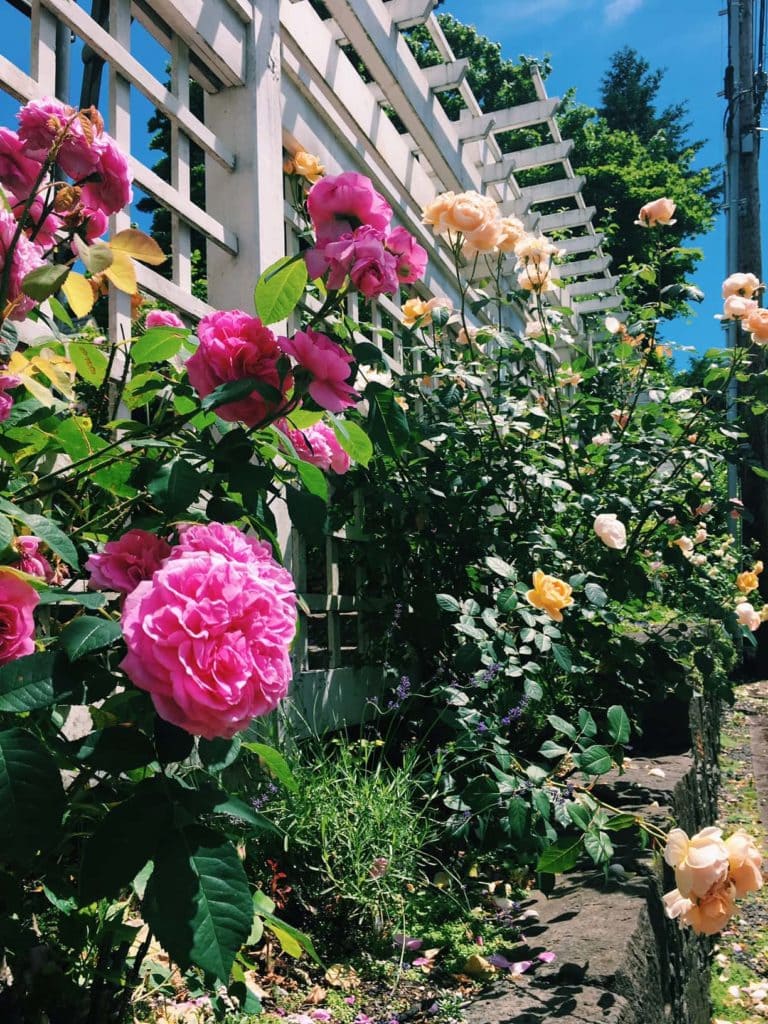
The other day I found an alley lit by roses. Cream, pink, heart peach, orange— the whole hem of the cobblestone was alive with their lanterns. Swaying from white trellises, they looked like women, scarved heads bowing in prayer. With each wind dip they washed the street with their petals, nodding to me as if I was a part of the motion as well.
Instinctively, I stepped off the road and into their grove of rose and cobblestone and just as quickly dropped every plan for my day. The To-Do’s scattering like the soft cups of petals, gathering rain.
I went from rose to rose. Touching, sensing, experiencing, inhaling. I was electrified by their difference. Each scent, unique— citrus, amber, and soft inner thigh. I cupped the blossoms, and was cradled by them. I was in the roses. In the alley. In the afternoon light. I thought of nowhere else, nothing else, and lost myself completely in the pure joy of just experiencing being alive.
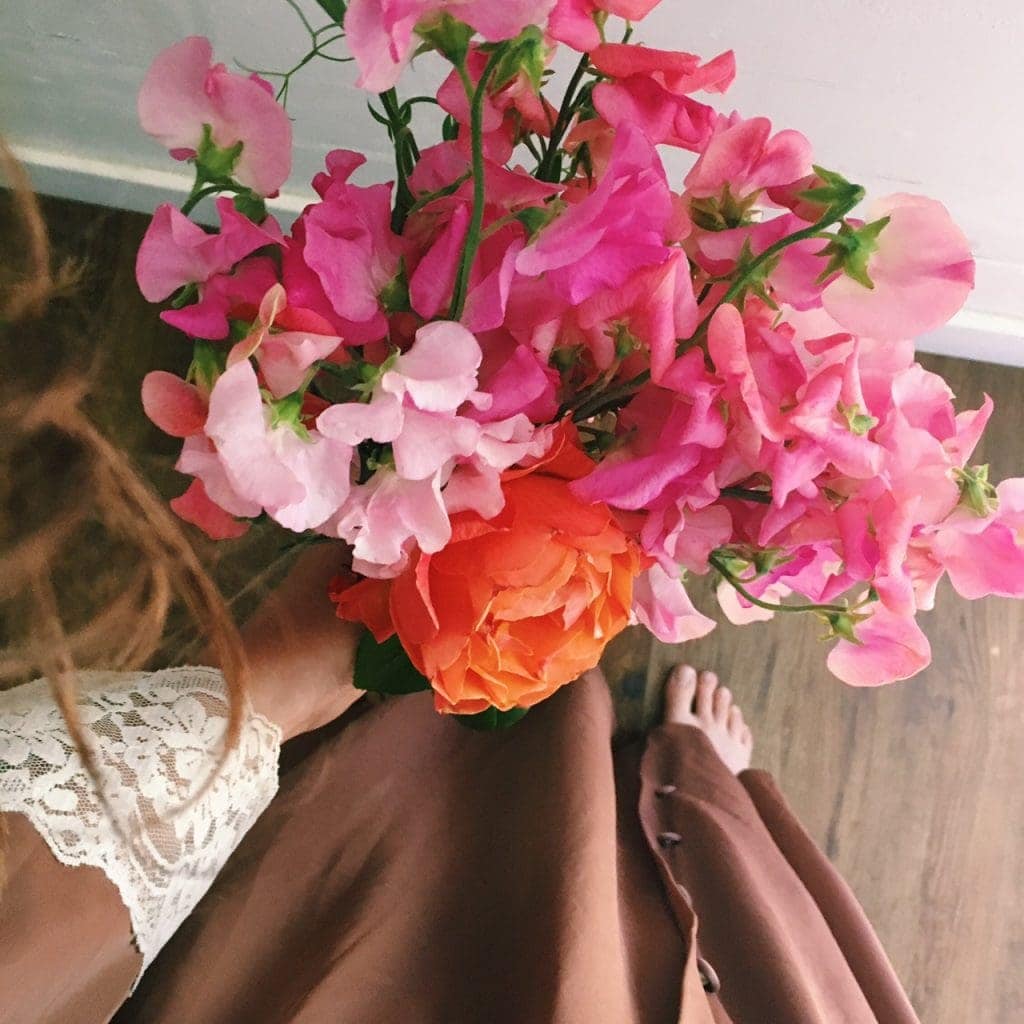
The deeper I move into my days, the more I realize that goals, accomplishments, and To Do’s are just décor. Ways in which we embellish our experience, give it complexity so we know where the handholds are. But beneath and within all of this is just experience.
The pureness of simply experiencing the world, as it takes shape around you. Of dropping analyzation, or even meaning, to just be in the variants and flutes and hues. To experience the world in all of its minutiae and mandala intricacy. In the longness of shoreline and cello note.
What if we aren’t here for any purpose…. except to experience ourselves in a world that is perennially sipping from the joy of its own experience? To know that experience, pure and unfiltered and streaming through the portals that are our bodies, is truly the greatest gift on earth. And that amazingly, unbelievably, this is available at any moment.
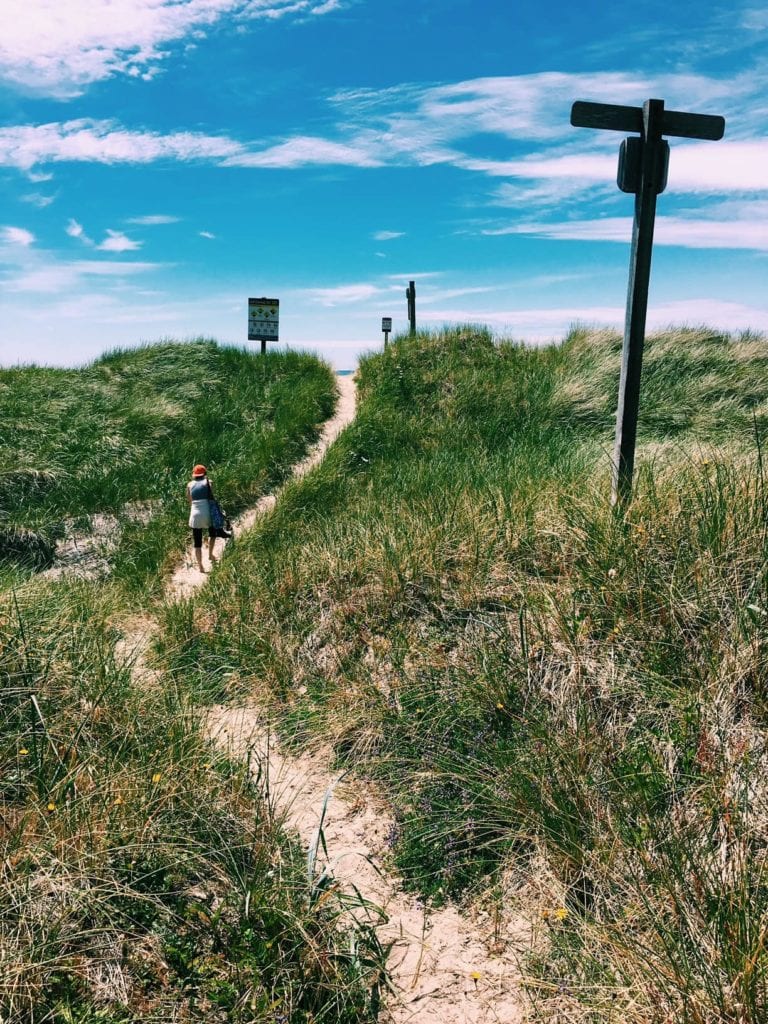
Experiences wish to enter us. To fill out every corner of our cells, like fresh fallen rainwater drunk from root tip to bloom. We spend so much of our lives striving to escape a certain experience, or to attain another. But what happens when we decide to simply dissolve into what is.
What happens when we experience it completely? What happens when “good” and “bad” drop away into the presence of what is aching to be felt, seen and embodied?
Wherever you are, the experience of that ‘thereness’ is wanting to come in and transform you. Whatever is available to be experienced, right now, is the medicine you’ve been seeking all along. All you had to do is agree to experience it, completely.
Heartbreaking, heart opening. Blossom heavy, as light as pollen. There is only experience. Lace colored, dawn touched, sweet as strawberries, high as sunflowers, wide as sweetgrass in the wind. There is only experience. The lines of your lover’s hand, the way the peas wind themselves around their trellis, rainbows in the mist of the hose, a swallow diving from the eaves of your home. There is only experience. An alley full of roses. Each one different, in scent and petal and life well-lived.
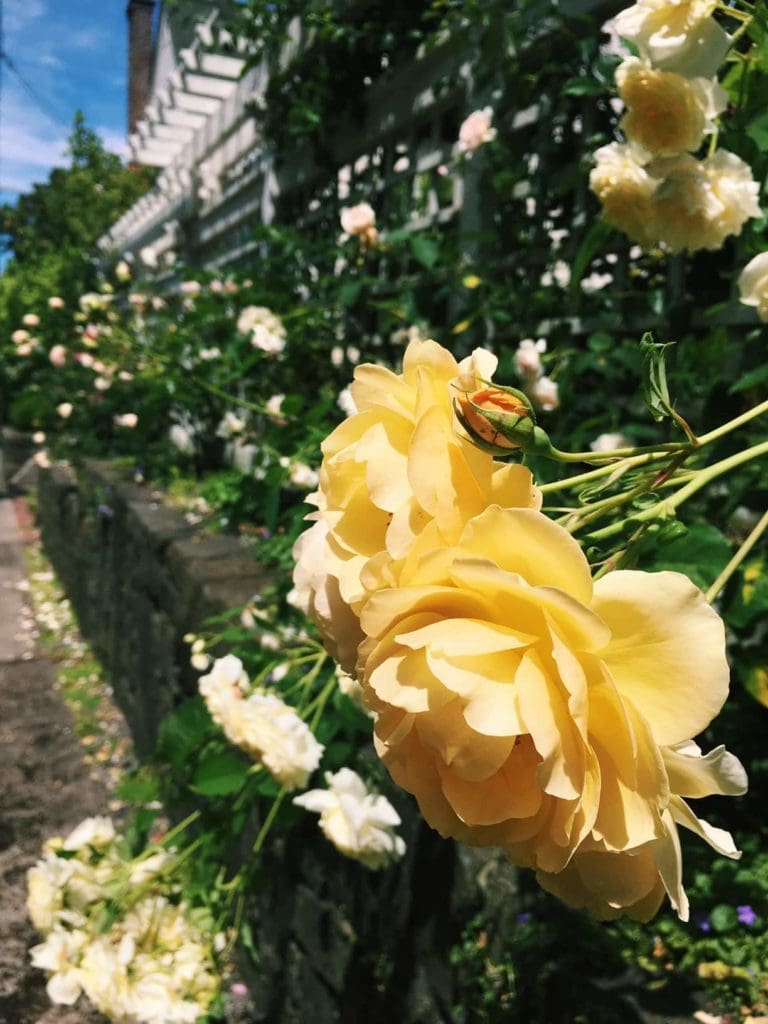
This is why we are here. To experience each other. To experience the trees. To experience the flowers. To have experiences that bring us to our knees.
Because from there we can look up and see everything.
So wherever your are walking right now, in whatever place you are sitting, moving, stuck or struggling, try experiencing it completely. Because this is how we can move on to even deeper blooms. What are the sounds beneath the sounds? The feelings beneath what is immediately evident? Go deeper and deeper and deeper. And know that you will be greeted by roses, and thorns, and a heaven of cool cobblestones and roads you never glimpsed before. That you will be wrapped in the arms of the world and be given the greatest gift on earth.
To experience the earth, experiencing herself.
And to experience yourself, as a part of that rose-colored dream.
<<<<>>>>
Ready for a lush experience?
Check out this video guide to my ultimate summer herbal cocktail!
With an introduction to my favorite summertime refresher (and the true story about the one time I completely rocked a booze cruise, and lived to tell the tale)
Visit the Herbal Medicine making course or head deeper into the blog to peruse more summertime herbal cocktails
20 Tuesday Jun 2017
Posted in Earth Medicine, Wildcrafting & Collecting
Summertime is like a linen sheet left out on the line— highlighted, outlined and defined by the omnipresence of sunshine. It sets the poppies aglow and warms the strawberries to ripeness. It pops open the peonies and lights the bowl of our days like porcelain.
Enlivening and inciting, the sun is the very definition of power-full. It is because of the deep eminence of the sun, that our Qi, the life force that animates our own bodies, sparks to life. Next time you are outside try baring your chest to the deepness of the light and see what happens. It might take a moment but soon you will feel infused with a power that throws the shoulders back, opens the heart gate, and helps you truly radiate.
In summer, the sun infuses its bold energy into all it touches. From the explosion of clover in the fields, to the soft weight of squash, the steady chorus of crickets and thickly heated nights— the warmth of the summer sun vibrates everything a bit faster, hurrying it into life. As human beings, diurnal creatures patterned to the light, our days are also directed by its torch. And as such, we too are stirred.
In the traditional tarot, The Sun is a forbearer of triumph, vitality, fulfillment and self confidence. Just like the fires of old, lit in the mouth of cave shelters, the energy of the sun can bring warmth, self assurance and solidity. It also creates important boundaries between the inner sanctum and the outside world. In many ways, fire is sunlight embodied, and it is the tool that forged human kind; when wielded and embodied rightly, fire creates a sacred definition of self. When we can embody the energy of sunshine, as efficiently as the plants soak in its bountiful rays, we can feed the élan of our inner fires.
Image from the Wildwood tarot deck
High on a mountain bald, in a meadow licked by wind and encircled by an endless fold of mountains, there is a plant that blooms at the peak of the summer solstice and has been revered for centuries for its light. If you weren’t expressly looking for St. John’s (or Joan’s in homage to Joan of Arc) wort you might easily pass right by. Understated and leggy in its growth, Hypericum will often blend right into a hillside. Easy to ID once you familiarize yourself with its sunny countenance, St. John’s wort is most known for its perforated leaves and translucent oil glands that, when held up to the sun, illuminate in polka dots of light. When I go harvesting St. John’s wort, I must often squint and seek with shaded eyes. Hypericum’s small yellow flowers are like droplets of butter amongst the blocks of yarrow and hearty meadow clover. To go searching for St. John’s Wort is to attune yourself to the subtlety of dappled sunlight.
An herbaceous perennial that typically blooms from June until August, St. John’s Wort is a plant with a long history of medicinal and magical lore. In medieval Europe, St. John’s Wort was considered to be an herb of protection, and was often employed against the ‘evil eye.’ Its scientific name, ‘Hypericum’ comes from Greek and means “to ward off an apparition.” Whenever St. John’s Wort has grown, it has been sought and gathered talismanically to help protect and fortify the borders of oneself.
One of the most defining ID characteristics of St. John’s wort is its garnet-red essential oil. When crushed during harvesting or medicine making, the leaves and flowers of this plant will turn one’s fingers tips a deep purplish-rouge. The “blood” of St. John’s wort is not only an important ID marker, it can also help us understand the deeper energetics of this versatile plant.
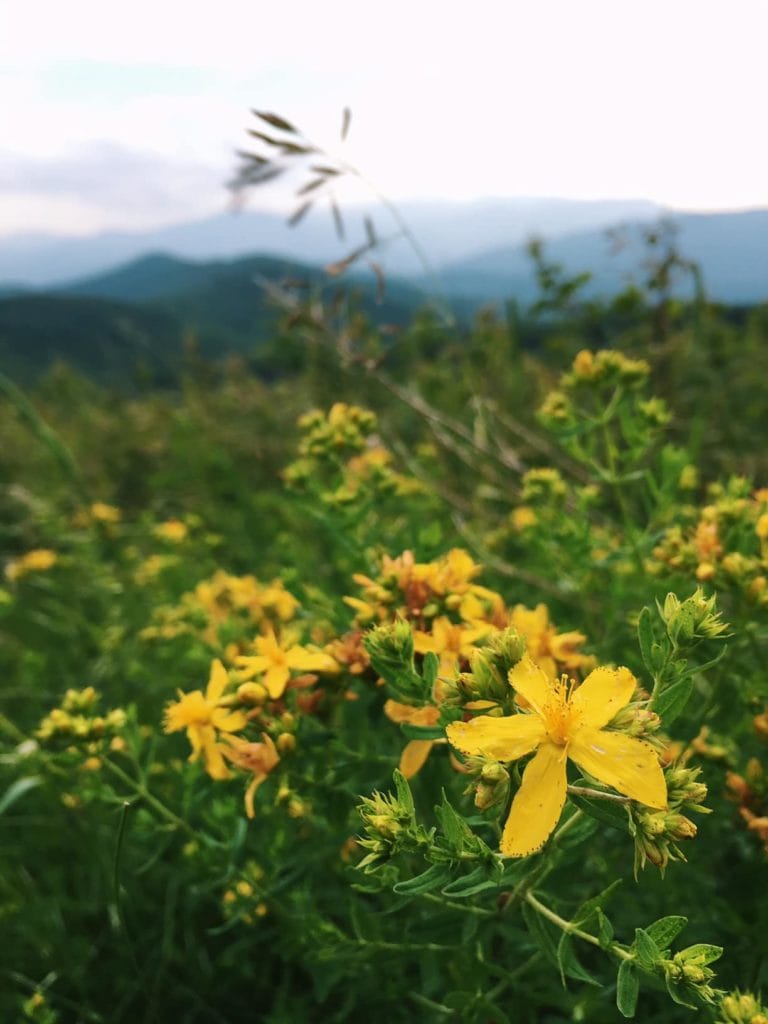
In Chinese medicine blood is considered to be the physically animating source that gives us life. When someone is full of their own life force, emanating well being, confidence and health, we say that they have good blood. With good blood, our life force can literally reach every corner of our body, filling out all our capillaries and veins, and the chambers of our inner resources. Good blood helps us inhabit the vehicles of our body, imbuing us with a radiance and power that comes from capturing the source of one’s inner energy. In contrast, a lack of blood is a literal lack of life force, an absence that can cause weakness, instability, low confidence and, unsurprisingly, physiological and psychic vulnerability. In Chinese medicine it is said that if you have strong blood, you simply will not be susceptible to parasites or attacks that come from the outer world. Namely, your own power source, your inner sunshine, is so filling and bright that you are unable to be inhabited by any unwanted energies (bacterial, psychic or otherwise).
This is an important medicine of our time, as we come to realize the fine difference between personal power and egoic inflation. Between inner brilliance and anxious manipulation. St. John’s wort, just like the presence of good blood and summer sunshine, is a plant that reminds us that in order to stay whole, healthy and strong we must nourish our personal life force and distinctive light. This lesson becomes particularly important in summertime as our center of gravity tends towards the outside world (just think of all the summertime parties you are required to attend!). In the warmer months it’s vital that we tend the inner fires of personal energy as we are asked to strike out more and more into the outer world.
Traditional people knew this innately, hence why this plant was so often used as a talisman to create healthy barriers to outside influences. While we might guffaw at the idea of the evil eye, when we replace this sentiment with our contemporary understanding of the damage inflicted by energy vampires, negative Nancys and bitter gossip, we see just how important St. John’s wort remains. With good blood and good talismans our boundaries we can remain bright— no matter how many ‘dark clouds’ pass through our lives.
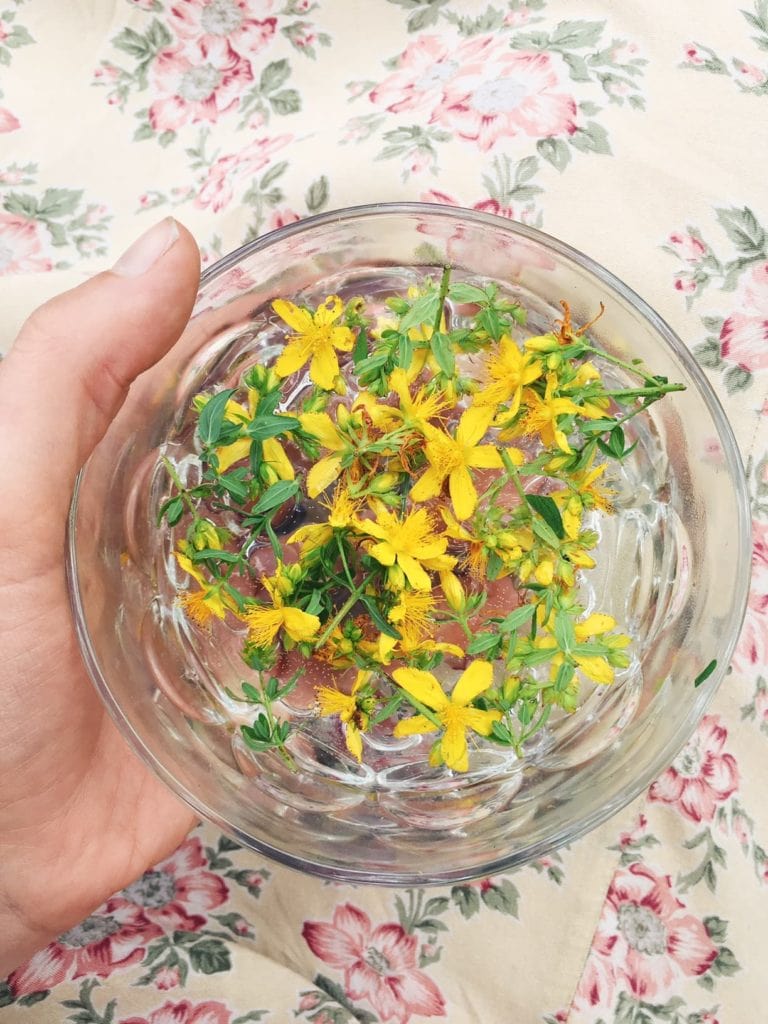
The physical medicine of St.John’s wort echoes its energetic ability to imbue protection and bring sunlight. Most people who have heard of St. John’s Wort are familiar with it as an herb for depression. Though this one action has become almost exclusively popularized in the last decade, this powerful herb has long history of being used for ‘madness’ and melancholy. Interestingly, some studies have suggested that this action might in large part have to do with its hepatic effects. As a hepatic, St. John’s wort aids our liver in its natural protective processes and clearance, helping to ride the body of lingering compounds (which is one reason why it is contra-indicated for those on life saving pharmaceutical mediations). For example, trials have shown that Saint John’s Wort can speed the clearance of excess cortisol (otherwise known as “the stress hormone”) so we can return more quickly to a state of inner peace.
Stagnancy and depression go hand and hand, and when our liver is bogged down it can create an even deeper quagmire in our life. If you have experienced depression or anxiety then you are familiar with the ways in which these emotions can seemingly strip away your personal agency and power. With Saint John’s wort, we bring vital energy and movement to our inner landscapes, freeing up more personal agency and light. One of my favorite ways to invoke the brightly protective energy of this flower is to rub infused St. John’s wort oil into my temples. It can also be particular potent massaged into the area around your thymus gland, in the center of your chest. The word thymus comes from the Greek ‘thymos’ which means “life energy.” If you truly want to feel like super woman, give your thymus a few hard Tarzan fist knocks afterwards and send out a loud whoop.
St. John’s wort is also a strongly protective medicine to guard our outermost selves. The flowers and above around parts are an effective topical remedy for bruising and burns and other abrasions arising out of disastrous interaction with the outside world. The herb is also an important antiviral, used specifically against enveloped viruses in vitro, a class of viruses which are responsible for many long-term viral infections such as cold sores, herpes simplex II, shingles and mono(nucleosis).
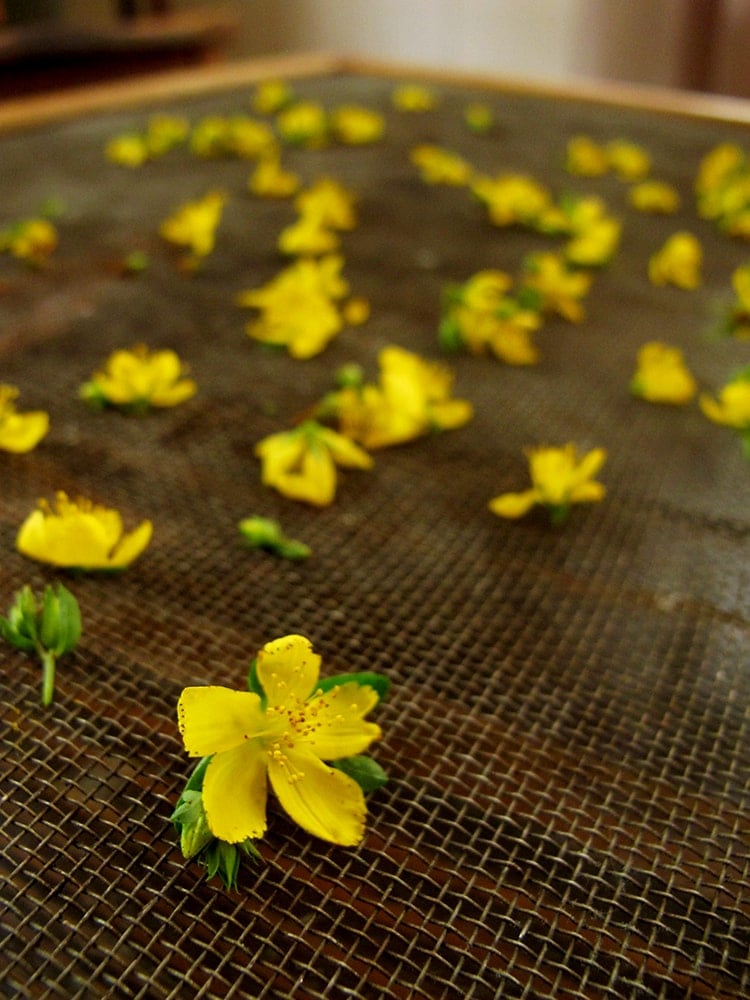
This vibrant solar plant can be a powerful remedy for nerve or muscle pain as well. It can work wonders, as both an external oil and/or internal tincture, for sciatica, back spasms, neck cramps, TMH and neuralgia. For many people, the over-reactivity of our bodies’ muscular and nervous system and be traced back to our tender interaction with the outer world. It is common for sensitive nervous systems and tense muscles to overcompensate in response to stressors in our environment. With St. John’s wort, we can take in the live-giving energy of the sun and revitalize our own stores of enlightened power.
** Perhaps unsurprisingly, SJW can cause photosensitivity (extreme sensitivity to sunlight). So be careful when handling and remain aware of your time under the sun when taking the medicine (externally or internally).
** Please use caution when using SJW internally as it can speed the clearance of life-saving drugs, and have potentially serious interactions with other medications.
30 Tuesday May 2017
Posted in Earth Medicine
In the wheel of the year each season has its distinctive gifts, its own character and flavor. There is a time for hermitage and planting, harvesting, seeking, risking, budgeting and even dying. But it’s only in summer that pleasure takes center stage.
Here in the mountains, we are just now tipping into the true growpoint of summer and a particular richness is beginning to take center stage. An invitation to kick back, practice relaxing and let senusousness take center stage.
As Ella Fitzgerald so famously popularized in the song “Summertime”, in summer the livin’ is easy. The intensity of building and seeding wanes, the rush of spring fades out of focus like a sunspot on the water and we’re left with an invitation to simply enjoy. Roses are fat on the vine and the fields are sweet with berries. Trees give ample shade to doze and the nights are warm enough to sleep out underneath the stars.
In summer there is something in our animal bodies that sighs. Here, we will not freeze, we will not starve, we will easily survive. It’s a curious but time-worn fact that when human beings aren’t under the immediate threat of survival, we can soften into a more deeply creative state of mind. Without the need to focus on the basics of our existence we can allow ourselves to shift our awareness into more subtle, expansive and fantastical pursuits. In the summer heat, when it’s all but necessary to take a siesta on the front porch, we are given permission to let ideas flow like wine, to indulge in the tiny pleasures of our soul. The poet Walt Whitman gorgeously embodies the restful cauldron of summertime daydreaming in his poem “Leaves of Grass”— “I loafe and invite my soul, I lean and loafe at my ease observing a spear of summer grass.”
Every day of our lives we are guided by desire, the innate ache to capture certain feelings so we can achieve a juicier, more fulfilled, richly embellished state of mind. Far from distractions, our desires can help us understand exactly what we are craving on a deeper level. Desires tell us where we want to go, and what we want to leave behind. And when we indulge our desires, we can begin to understand why we yearn for them in the first place. In our country of religious over-work, summer is often a nationwide sanction to follow one’s desire. Vacation, beach lounging, full-bellied barbeques, late-night mojitos and midnight romance.
Far from the puritanical work ethic that seems to pervades so much of our contemporary work-culture, the hedonistic aspect of summertime invites us to inhabit a more fluid state of being. A tantric exploration of our inner feelings, and a softer, more liberating gateway to soul.
But the only way in which we can both feel and feed our desires, the only way to truly take pleasure and give ourselves permission to enjoy it all is to s l o w d o w n. And though the heat of mid-day seems to demand it, the buzz and rush of summer can sometimes make it feel near impossible. This, is when herbs become heroes.

>> Passionflower (Passiflora incarnata) <<
Of all my time on earth I don’t think I have ever seen a flower that is more exquisite, exotic, and captivatingly otherworldly as the Passionflower. Passiflora is one of those honest to goodness botanical show-stoppers and once people meet this exquisite flower they tend to fall head over heels in love. A crush of mine once told tell me that if I was any flower, I’d be a passionflower. I was, of course, endlessly flattered. And you can bet that one statement tipped me right over into full-blown amour.
The name of Passionflower comes from early Christian missionaries, who saw the unique arrangement and presentation of the plant’s floral parts as a prime opportunity to illustrate the crucifixion of Christ (otherwise known as “the passion” of Christ). I can’t say this would have been my first thought, but to each their allegory! The name has stuck, however, because there is truly an aspect of this vigorous vine that not only excites passion, but invites the softness of space to find heady pleasure in one’s life.
Native to the southeastern U.S, Passiflora incarnata thrives in warmer climates and can even become weedy in far southern climes like Florida. Other species of passiflora can be found throughout the world with their own local history of use. In US zones 5-9 Passiflora incarnata is relatively easy to grow and cultivate. Once established in the garden, the swirling perennial vine will quickly take over trellises and send shoots out in all directions. It will bloom all summer long and any blossoms left on the vine will grow into deliciously round fruits call maypops, which contain tartly cooling inner piths.
Historically both the roots and above ground parts have all been used as medicine, but contemporary herbal material medicas focus mostly on the leaves and flowers. Passionflower is one of our safest, yet effective, hypnotics (or sedatives). It is my favorite herb to help soften into sleep, especially for those who have a hard time shutting down their brain and tend towards circular thinking. As I’m prone to mental merry go-rounds, I often take passionfower before bedtime. It is so adept at shutting down well-worn circuits, I sometimes find myself on such a different train of thought, I can’t remember what I had previously been ruminating over! Unfortunately, sometimes it takes a while to get off the beta brain wave state all together and ease into sleep.
Passionflower is also a lovely nervine and anxiolytic. It is one of my most treasured allies for agitated anxiety, buzzing minds, busyness and overwhelm. In tea or tincture form, this mandala-like flower is indicated for those who feel trapped in a cycle of repetitive worries and race track thoughts. As such, it can offer sweet release for those who experience headaches from such brain ruts. Passionflower is also an anodyne (pain reliever) and can be used as an ally for menstrual cramps, PMS and bodily tension.
Blooming in mid-summer, Passionflower helps us to slow down and relax in body, spirit and mind. Each open passionflower is an invitation to let go and recline. You can see this illustrated most effectively through the bees. All summer long these winged imbibers crawl into the corolla of the passionflower, coat themselves in pollen, and then let themselves drift into somnolence for a while. It’s not unknown to see a bee taking a mid day nap in the lap of a passionflower.
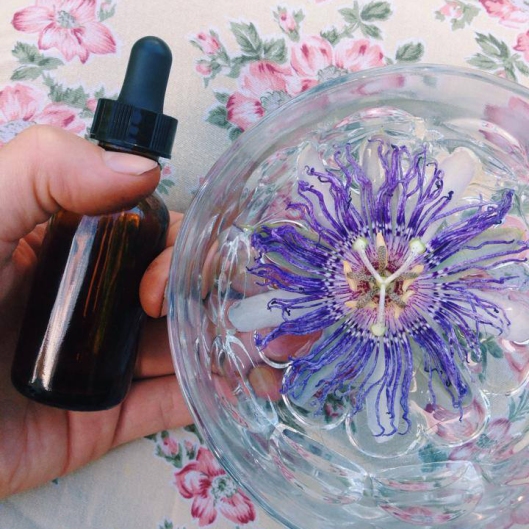
The first time I met this plant I had a deeply powerful experience that has shaped the way I’ve understood its medicine ever since— and it began with one sleepy bee. I was in herb school at the time and as we were just meeting passionflower on the vine. As we looked over the plant we found a wee bee asleep in the bloom. In the midst of copying down material medica, an enterprising friend of mine attempted to “wake up” the bee, effectively knocking it out of its perch and onto my arm where it promptly stung me, no doubt quite disgruntled at having its beauty sleep disturbed. Thankfully, I am not allergic to bee stings so, though I had quite a large welt, I was bodily fine.
The very next day I drove with some friends down the coast for a weekend at the beach. A short vacation devoted to pleasure. I was walking back from the ocean on our last day when the welt on my arm began to throb, almost like a homing beacon. I slowed and placed my hand over it and suddenly, I just knew— passionflower was close. Following my instincts I ducked between the houses, through several backyards, and wandered towards a small open space of weeds and debris when, suddenly, there it was! Cascading down a wall of shrubbery was a gorgeous passionflower vine, alit with blooms. It was my first time finding passionflower growing wild and I was as giddy as a child in a field of lollypops. I gathered as much as I felt I could and skipped back to the house to tell my friends so we could all admire. Later that day, I got into the car to drive home and felt a curious shift begin to take place inside of me. I was on the cusp of ending a long-term relationship and had been delaying the decision due to a never-ending circuit of worrisome doubt. But sitting next to that passionflower on the long drive home, something inside of me just snapped. The same repetitive thoughts of fear seemed to break open and before I knew it I was bawling my heart out to this magnificent vine, and coming to a realization that it was time to break the cycle. I realized that I needed to leave behind this relationship to follow the true map of my desires. That ceasing this partnership would open me up to accessing more relevant passions, allowing whole new avenues of creativity and self growth. When I got home I made the decision, and I never looked back.
Years later I was sitting with a group of students who elected to make a passionflower flower essence. I wasn’t surprised when, during the attunement process, this was what they picked up on: “Passionflower is a powerful essence for connecting to the deep reservoirs of your creativity and the guiding voice of your passions. Both opening and grounding, passionflower helps us to let go of outside expectations, express our truth and honor the beauty of who we are. A valuable ally for times of self-realization, intuitive expansion, and compassionate beginnings. passionflower encourages us to embrace the power of our vulnerability, the chaos and symmetry of profound growth. Recognizing the wholeness within new beginnings. This exotic bloom can show us just how many possibilities exist within our individual realm.”

Passionflower Sun Tea
One of my absolute favorite ways to imbibe passionflower is to use the distinct alchemy of summertime to create a gentle, relaxing daytime tea.
22 Monday May 2017
Posted in Earth Medicine, Inspirations, Wild Foods, Wildcrafting & Collecting

I saw the smoke out of the corner of my eye, like a cigarette, pitched low to the ground and still smoldering. I was out alone, sunning myself at my favorite swimming hole, luxuriating in the richness of a hot day in early May. But in a flash I was up, eyes scanning the hillside for an unseen visitor, my brain already leaping to the fear of a small wildfire.
I glanced over… and the smoke disappeared. I looked quizzically across the water and back again. Then, the ghost spiraled into the air once more. And that’s when I saw them. On a small rock curved above the water was a whole gathering of nettles in full bloom. And they were smoking.
Not alit, but on fire in a different kind of way. At the peak of their flower, they were sending soft bursts of pollen into the still air. One after another they steamed and sighed. The sun was low enough that every cloud was caught in relief. Like the fuses from a firecracker, or the satisfied draw of a pipe, they were alive with a kind of seeking, self-satisfied pleasure. And I was stunned.

We know plants are alive (of course), that they grow and transform, but usually their movement happens in a place below our perception. Only caught by longwinded cameras or glimpsed in stop motion over the course of hours.
But here, before my eyes, I was seeing them move, shivering and releasing in a chorus of luscious hope. More than erotic, it was a display of profoundly indisputable aliveness. And I was mesmerized.
I was watching the kind of intimacy and potency that I know exists, but that normally stays hidden in realms of ridiculous privilege and breathless rarity.
I was watching the world expand.
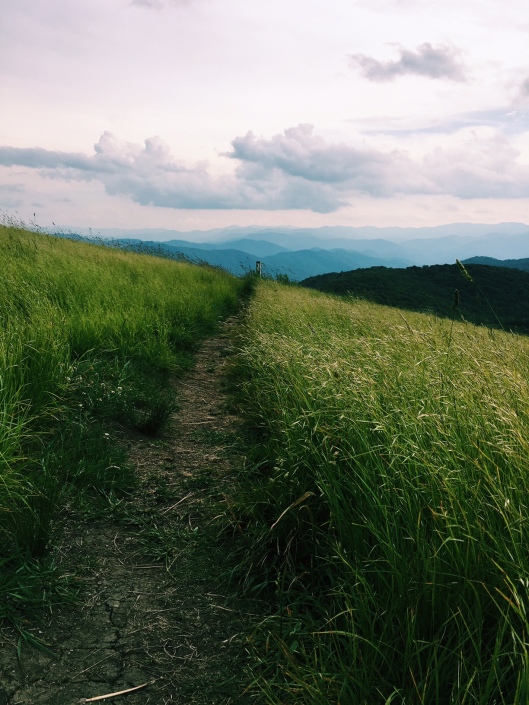
Recently Sarah Thomas of Clarity Stone medicine posted a video on her instagram referring to the Chinese energetics of summer vs spring. It struck me mightily. In spring, she shared, the energy of every being stretches upwards, like the vine reaching towards the sky. In summer, however, we reach the zenith of that sky stretch and from there our job is simply to e x p a n d. Straight into the heaven that is here on earth.
The nettles were as tall as they would get this season, and fully adorned with flowers. Now, they were expanding outwards, past even their leaf tips, to drift downstream and create new life. I was watching the world expand in its physical form, and it was a rich, hazy, and wholly mysterious dance.
As we come close to the first new moon of Gemini, I find myself sinking into the gifts of where we’ve been. May is the month of Taurus, the astrological sign of embodiment, sensuality, physicality and the earthly delights. It marks a time in the wheel of the year when we are invited to come into the lusciousness of life and fill all the corners of our physical being. In between the wood of spring and fire of summer, May is a moment to drop soulfully into the soil of our bodies. The body that came here to experience skinny dipping in secret swimming holes. The body that loves food and music and flowers. The body that is naturally creative and regenerative. The body that is ready to expand.
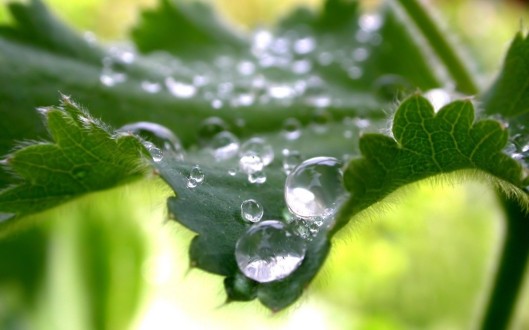
So try taking a sip of some nettle medicine.
Allow yourself to take up space. Develop a daily movement ritual to tap into the pulse of how your body wants to experience itself. Nourish, celebrate, dig in, fan out. Find the things that make your body dizzy with pleasure and do them. Watch the plant world, and let them teach you about the innocent magic of passion, attraction and desire. Let them help you expand, even, beyond our society’s framework of sexuality to see these acts of regeneration for what they are— the sensuously spiritual bedrock of giving, receiving, sharing and creating that defines earthly life.
Let the gorgeousness of you being fully in yourself flow outwards like pollen into the wind’s stream. Because just being who you are, in your exact being, is the power that can cause the whole world to come into fruit.